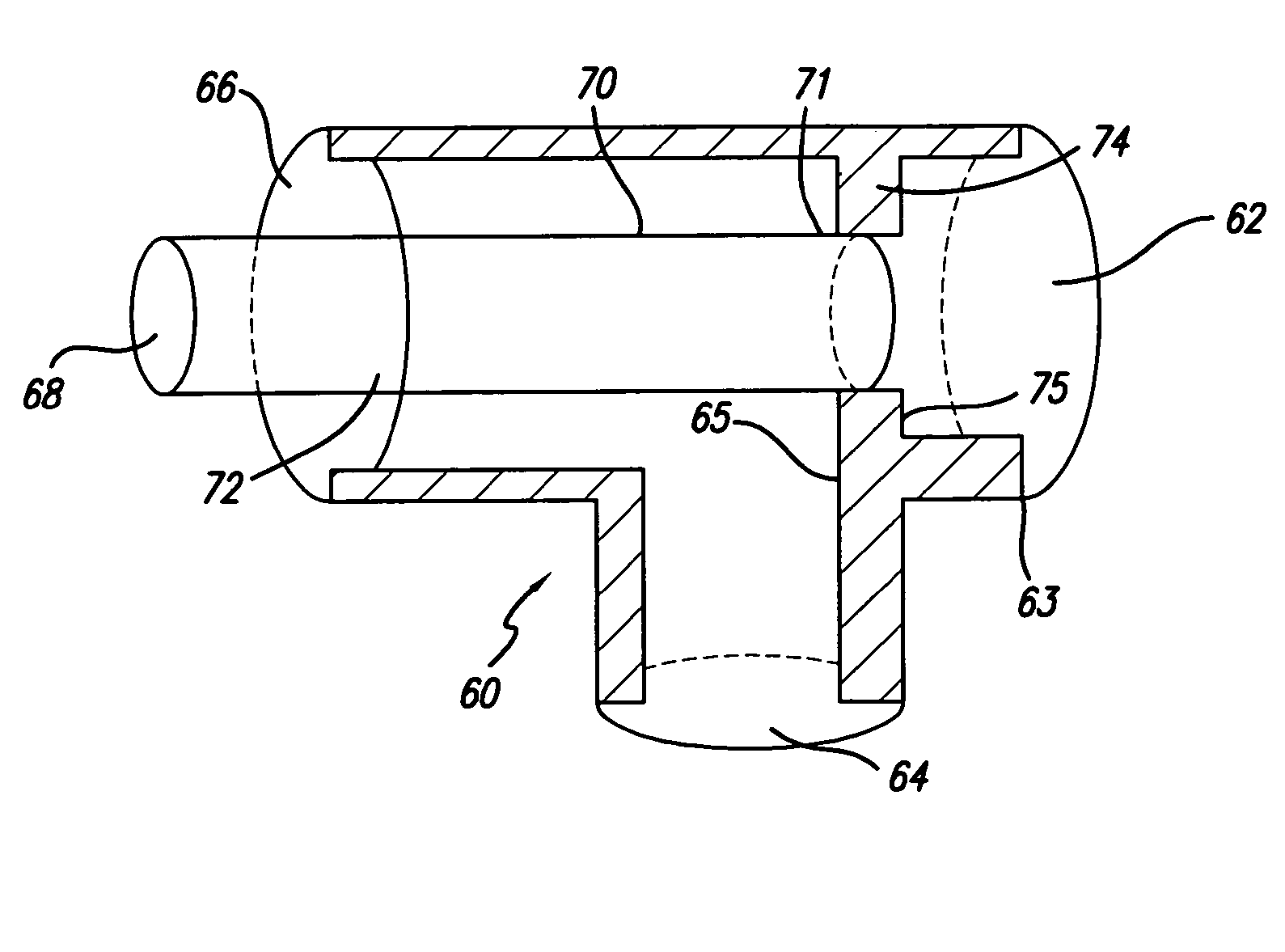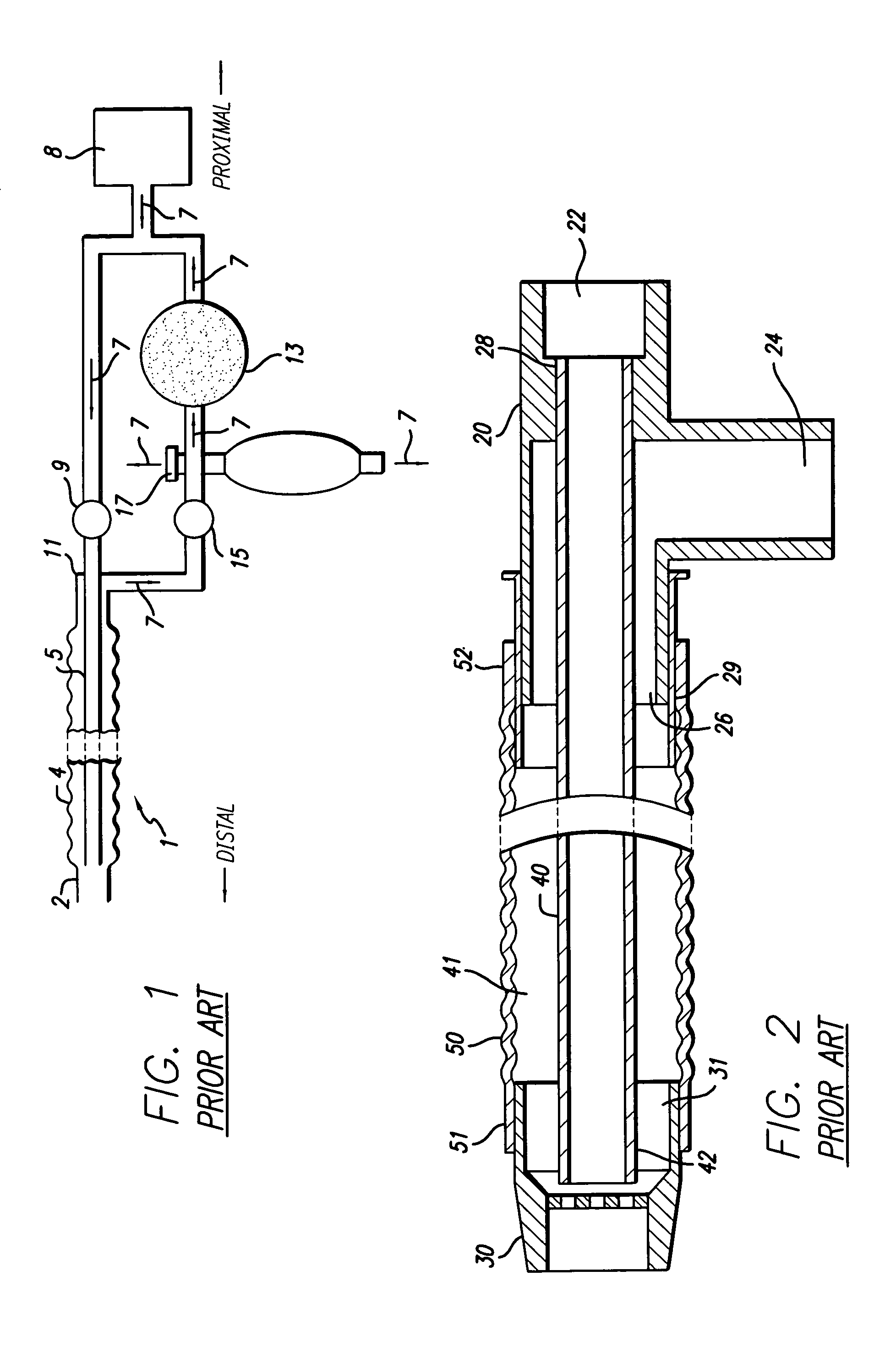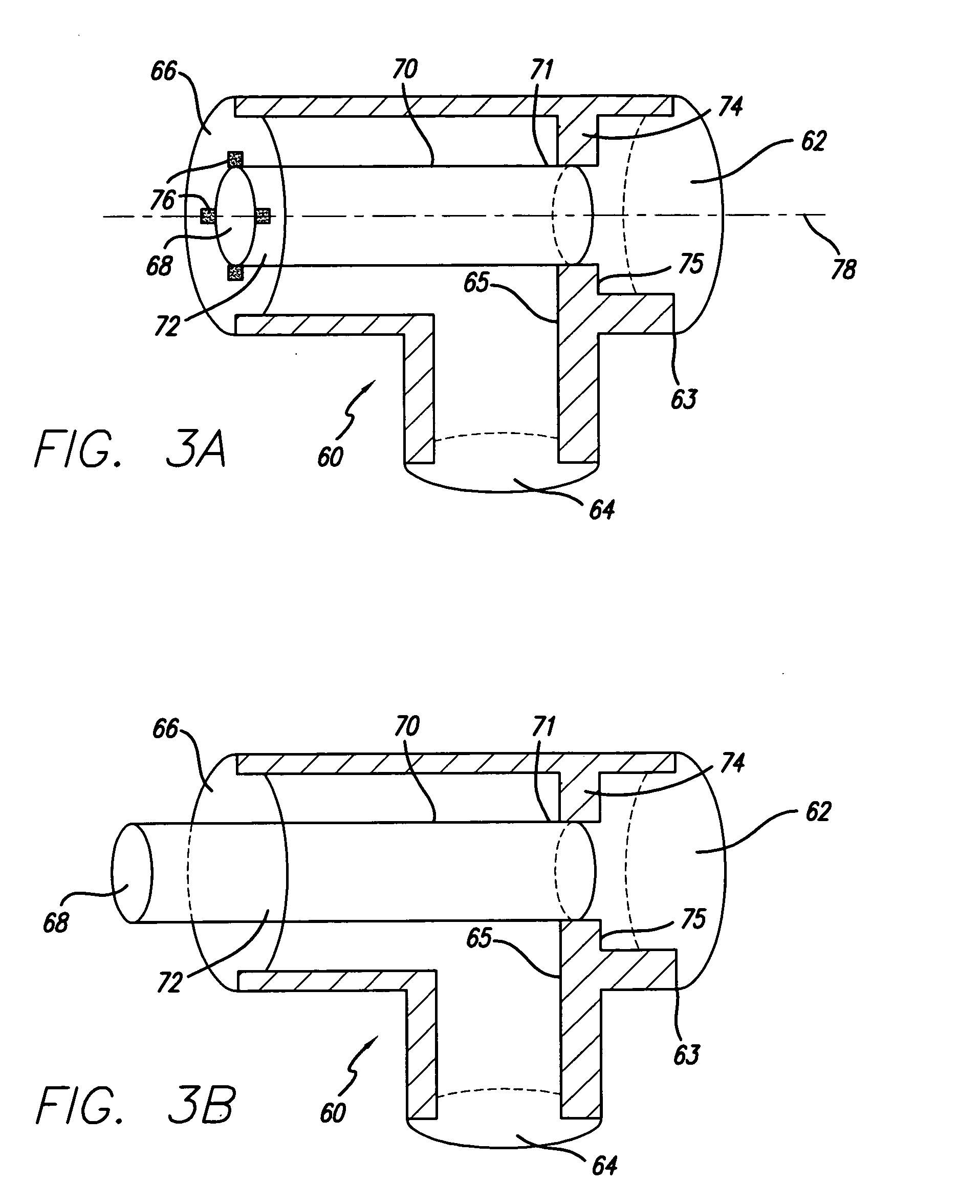Multilumen unilimb breathing circuit with detachable proximal fitting
a multi-lumen, proximal fitting technology, applied in the direction of colloidal chemistry, separation process, filtration separation, etc., can solve the problems of unfavorable the proximal end of the inner tube could be disconnected from the inspiratory port, and the prior art unilimb devices do not facilitate the reconnection of the inner tube to the inspiratory port, etc., to reduce the possibility of component disconn
- Summary
- Abstract
- Description
- Claims
- Application Information
AI Technical Summary
Benefits of technology
Problems solved by technology
Method used
Image
Examples
Embodiment Construction
[0056] A brief description of a basic prior art artificial ventilation system and unilimb device will facilitate a description of the present invention. With reference to FIG. 1, a schematic view of a circle circuit artificial ventilation system utilizing a unilimb respiratory (inspiratory and expiratory) gas conduit is illustrated. A unilimb respiratory (or breathing) conduit 1 may be attached at outlet 2 (otherwise referred to as a nozzle or distal terminal) to a patient endotracheal tube or mask. Breathing conduit 1 is formed to include an outer tube 4 and an inner tube 5. Directional arrows 7 show the preferred direction of gas flow through the system; for example, expiratory air is carried away from a patient through the annular spacing between inner tube 5 and outer tube 4. Inspiratory gases are provided to inner tube 5 from a gas source 8, passing through a unidirectional valve 9. Inner tube 5 penetrates the wall of proximal terminal housing 11; housing 11 essentially compris...
PUM
| Property | Measurement | Unit |
|---|---|---|
| Luminous flux | aaaaa | aaaaa |
| Luminous flux | aaaaa | aaaaa |
| Flexibility | aaaaa | aaaaa |
Abstract
Description
Claims
Application Information
 Login to View More
Login to View More - R&D
- Intellectual Property
- Life Sciences
- Materials
- Tech Scout
- Unparalleled Data Quality
- Higher Quality Content
- 60% Fewer Hallucinations
Browse by: Latest US Patents, China's latest patents, Technical Efficacy Thesaurus, Application Domain, Technology Topic, Popular Technical Reports.
© 2025 PatSnap. All rights reserved.Legal|Privacy policy|Modern Slavery Act Transparency Statement|Sitemap|About US| Contact US: help@patsnap.com



